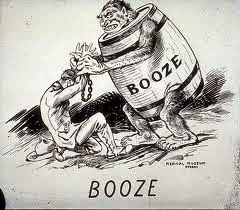by Sean Murray | Oct 1, 2014 | Uncategorized
Every business owner – at one point or another – feels completely over their heads in overhead. We all want to save money – but we don’t want to sacrifice productivity. We want to increase productivity – but not at the expense of our profits.
For business owners who haven’t yet switched to the cloud – its not that they haven’t heard how “cool” it is. The questions come down to – is it right for my business? Will it be difficult to integrate? and at what cost?
So here are five reasons to help you make the leap forward:
1) Mo-Money in the Bank
Unlike non-cloud solutions – you are paying regularly for the hardware – upgrading the hardware – maintaining the hardware, cleaning the hardware – running the hardware – keeping the hardware cool – keeping someone around who can figure out what else you need to do with the hardware – paying the maintenance guy to run holes for wires – paying employees to sit around looking pretty while the IT guy figures out why no one can get work done. If you don’t think that kind of stuff adds up over time then you’re either very lucky, or not very intimate with your books. The cloud may not eliminate issues on your daily use PCs – but it sure takes that sting out of running the servers.
2) Wiggle Room
Inevitably, if you run servers in your office, there will be a day – unexpected and usually in the middle of an important conference call – that you simply run out of space on your server(s). Now the IT guy has to pick up some more hardware.. upgrade the server… wait, can’t do that while its on. “Everyone in the office – take an extra long lunch today! We’re sticking a metal rectangle inside of a metal rectangle. This could take a while…” On the cloud – you can pay for the space you need… when you need it. Don’t need a lot? Pay for a little. Need more? A few clicks can usually get you there – and at worst, a few more clicks than that will get you there.

3) An Ounce of Prevention

“An ounce of prevention is worth a pound of cure.” For anyone who has ever paid the bill for data recovery on a crashed machine… you know exactly how monetarily accurate this analogy is. The IT world knows that whatever is on that disk could make or break your business. It’s no secret that they can and will charge just about anything for this service – knowing you are backed into a corner. Of course, this doesn’t describe every data recovery business, but its common enough to be worth mentioning. Trust us – if you have never faced this issue – you never want to. With the cloud – your data is backed up securely in a protected location.

4) Employee Harmony
 We know what you’re thinking – and no – the cloud will not dispel water cooler gossip or keep John’s hands off of Susan’s lunch in the break-room. However – John can work from home and eat from his own fridge. The cloud allows everyone to access necessary applications simultaneously – whether they’re in the next room – the next state – or delayed on a train on their way to work. Everyone has up-to-date and synchronized information at their disposal… and the key player in the office who just broke his foot can work from his bed at home if he wants to.
We know what you’re thinking – and no – the cloud will not dispel water cooler gossip or keep John’s hands off of Susan’s lunch in the break-room. However – John can work from home and eat from his own fridge. The cloud allows everyone to access necessary applications simultaneously – whether they’re in the next room – the next state – or delayed on a train on their way to work. Everyone has up-to-date and synchronized information at their disposal… and the key player in the office who just broke his foot can work from his bed at home if he wants to.

by Sean Murray | Sep 17, 2014 | Uncategorized
Society sure has come a long way since “turn left at the tree and go up the big hill.” Or for people who live in places like Atlanta “Turn off of Peach Tree Way to Peach Tree St. Head four blocks past Peach Tree Lane and take a right onto Peach Tree Boulevard.” Of all the pain points technology has decreased for us over the years, GPS navigation is one of the most pervasive – and most loved of those technologies.
But How Does GPS Work?
First, it’s interesting to note that you do not “have GPS” you have access to GPS via a GPS receiver. GPS itself is the Global Positioning System. The GPS is actually made up of 24 active satellites orbiting the Earth, with another 3 in orbit as fail-safes should others experience problems. These GPS satellites circle the earth twice each day and transmit signals to Earth.
GPS was originally developed and implemented as a military navigation system in the 70s, but was made available for use by civilians in 1983 by then-president Ronald Reagan. Civilian signals, however, were intentionally degraded in quality until May 1, 2000 by President Clinton.
The orbits are arranged so that at any time, anywhere on Earth, there are at least four satellites “visible” in the sky.
The signal these satellites transmit are low power radio signals. Civilians use the L1 frequency and can receive a signal from GPS only via line of sight. While the signal will pass through clouds or lighter weight objects – buildings and mountains tend to get in the way.
Each signal contains 3 codes. One code identifies the satellite itself. The second transmits the status of the satellite including the date and time. The third code is the Almanac data which tells the receiver where that satellite should be at any given time. A receiver uses this data from each of the satellites to determine your distance from each of those satellites. Your distance from each of those known points tells the receiver the point of your location.
As far as telecommunications go… GPS is hands down one of the coolest inventions since the telephone – both amazingly simply – and astoundingly elaborate in its construction.
Have you ever gotten mad at your GPS for not working right?
Garmin shares the most common reasons for GPS errors:
Factors that can degrade the GPS signal and thus affect accuracy include the following:
- Ionosphere and troposphere delays – The satellite signal slows as it passes through the atmosphere. The GPS system uses a built-in model that calculates an average amount of delay to partially correct for this type of error.
- Signal multipath – This occurs when the GPS signal is reflected off objects such as tall buildings or large rock surfaces before it reaches the receiver. This increases the travel time of the signal, thereby causing errors.
- Receiver clock errors – A receiver’s built-in clock is not as accurate as the atomic clocks onboard the GPS satellites. Therefore, it may have very slight timing errors.
- Orbital errors – Also known as ephemeris errors, these are inaccuracies of the satellite’s reported location.
- Number of satellites visible – The more satellites a GPS receiver can “see,” the better the accuracy. Buildings, terrain, electronic interference, or sometimes even dense foliage can block signal reception, causing position errors or possibly no position reading at all. GPS units typically will not work indoors, underwater or underground.
- Satellite geometry/shading – This refers to the relative position of the satellites at any given time. Ideal satellite geometry exists when the satellites are located at wide angles relative to each other. Poor geometry results when the satellites are located in a line or in a tight grouping.
- Intentional degradation of the satellite signal – Selective Availability (SA) is an intentional degradation of the signal once imposed by the U.S. Department of Defense. SA was intended to prevent military adversaries from using the highly accurate GPS signals. The government turned off SA in May 2000, which significantly improved the accuracy of civilian GPS receivers.

by Sean Murray | Sep 3, 2014 | Cost Recovery, Phone Bills, Telecom, Telecom Bills, Telecom Refunds, Telecommunications, Uncategorized
This is NOT the kind of surprise most businesses want to find in the mail. A seven-person architecture firm in Georgia can attest to that. TW Telecom, in late March, experienced a 44-hour security take-down. During that time, the firm’s international calling plan was hacked.
In the digital age, telecom hacking has become an increasing problem for small businesses. According to our source story, the Communications Fraud Control Association found that global losses from telephone fraud in 2013 totaled an estimated $46.3 billion — up $6.95 billion from 2011.
Not all frauds are easy to catch. If your business regularly makes and receives calls in and out of the country – these instances can become more difficult to catch.
If you believe you may be getting overcharged for telecom services, it is important to contact experts who can audit your bills and recover your funds. Luckily, the better Telecom Bill Recovery Services will work on a contingency basis.
I have been helping companies reduce their telecom costs for over 30 years. If you would like your telecom contracts thoroughly reviewed by a seasoned expert with a consistent record of securing savings, contact me today.
by Sean Murray | Aug 29, 2014 | Electric Bills, Gas Bills, Uncategorized, Utility Auditing, Utility Bills, Water Bills, Water Leaks
DID YOU KNOW that utility companies often have more than one rate for commercial/business clients?
GUESS WHAT. They don’t hand out the best rates automatically. Customers must seek better rates for themselves.
The process of finding the best and most appropriate rate can be tedious – and frankly – as a business owner, you’re already busy running your own business.
This is where Applied Utility Auditors can help. We find overcharges for 80% of all clients.
You might be reading this because your business was referred to AUA or because we’ve contacted you about conducting a utility audit and you have questions.
We’re fortunate that the majority of our customers come from happy client referrals.
Here are a few quick points:
First, when you’re with Applied Utility Auditors, you’re in good hands.
Our team has over 75 years of collective experience in auditing:
• Telecom
• Electric
• Gas
• Water/sewer services
• General bill auditing
Second, our job is to find:
• Errors
• Overcharges
• Incorrect rate group assignments
Third, we get to work by:
• Auditing your invoices
• Analyzing usage
• Identifying the errors
Fourth, you reap the benefits:
• Cost and service recommendations are made
• New rates are negotiated with the utility provider
• Everyone’s favorite part: You score a REFUND!
• We continue monitoring your utility bills monthly basis to ensure accuracy
How Does Utility Bill Auditing work?
• Audits are performed on a contingency fee basis
• No errors = no charge to you
• Begin by sending us a copy of a utility bill
• In 2-6 weeks, we’ll have our results and recommendations
What about the money?
1. The refund will either be a check or a credit on future bills.
2. Issue a check to AUA for 50% percent of the refund received.
3. Enjoy your savings! Remember, this is money you have already spent.
The AUA Team looks forward to working with you and adding to your bottom line.

by Sean Murray | Aug 4, 2014 | Paul's Picks, Random Fun, Uncategorized
Have you ever ever wondered where some words and phrases come from? Here are a few we can finally stop wondering about…
Booze – A combination of the Middle English (c.1300) verb “bouse”, meaning to drink heavily, AND the name of a famous Philadelphia distiller named E.G. Booze. Ben Franklin published a book of synonyms in 1722 and used the word “boozy” as a synonym for “drunk”.
Three sheets to the wind – was originally used to describe a drunk person in 1812 to describe the image of a sloop-rigged sailboat whose three “sheets” or sails had slipped through their blocks and were thus lost to the wind, and “out of control”.
Hammered – originally meant to be “heavily defeated”, and became officially recognized in 1986 as meaning drunk.
Dashboard – the original dashboard was a board in the front of wagons and carriages to stop mud from horses hooves from splashed into the vehicle.
Limousine – comes from the name of the Limousin region in France, where the chief city is Limoge. Apparently, the people of that region traditionally wore a hood that was similar to the hood, or profile of early luxury cars.
Chauffeur – another word with French origins meaning the “stoker” or operator of the steam engine (chaud, meaning “hot”, thus “chauffer” meaning “to heat”, from the Old French verb “chaufer” –“ to heat”.
Enough drinking and driving slang – Why are we buried in a…
Coffin – early 14th C. for a place to store valuables, taken from the Old French “coffin” meaning “sarcophagus”.
Dead as a doornail – meant “insensible” in the 1300’s, and by the 1500’s meant “inactive and dull”.
Dead man’s hand – in poker comes from the pair of aces and pair of eights that Wild Bill Hickock was holding when Jack McCall shot him in 1876.
Back to drinkin…
Dead Drunk – was first used in the 1590’s, and in a “dead soldier” became an empty bottle of liquor in 1913.
Thank you to the television show – “American Slang”, and to the web-site “Online Etymology”
If you ever want to grow a braincell back after all of that drinking…
Check out Paul’s Pick of the week: “Online Etymology”
And a final thought…
“What the caterpillar calls the end of the world, the master calls a butterfly. – Richard Bach
by Sean Murray | Jul 30, 2014 | Telecom, Telecommunications, Uncategorized
In an effort to speed up data connections between Mars and Earth, NASA has reached out to US and international companies and scientists for solutions.
Currently, NASA depends on satellites used for research carrying specially designed radios – but the current technology is aging, insufficient, and will likely deteriorate before NASA’s budget allows for more satellites to be launched.
The Federal Business Opportunities website (http://FBO.com) states that the project would consist of “orbiters capable of providing standardized telecommunication services for rovers and landers on the Martian surface, in the Martian atmosphere, or in Mars orbit.”
Read More Here.
![]()
![]()
 We know what you’re thinking – and no – the cloud will not dispel water cooler gossip or keep John’s hands off of Susan’s lunch in the break-room. However – John can work from home and eat from his own fridge. The cloud allows everyone to access necessary applications simultaneously – whether they’re in the next room – the next state – or delayed on a train on their way to work. Everyone has up-to-date and synchronized information at their disposal… and the key player in the office who just broke his foot can work from his bed at home if he wants to.
We know what you’re thinking – and no – the cloud will not dispel water cooler gossip or keep John’s hands off of Susan’s lunch in the break-room. However – John can work from home and eat from his own fridge. The cloud allows everyone to access necessary applications simultaneously – whether they’re in the next room – the next state – or delayed on a train on their way to work. Everyone has up-to-date and synchronized information at their disposal… and the key player in the office who just broke his foot can work from his bed at home if he wants to.




















